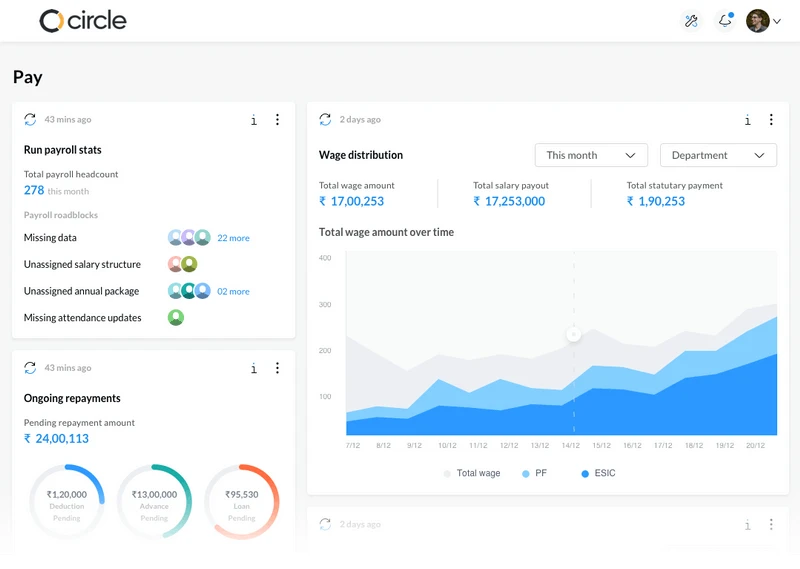For many people, being able to work from home has been a long-held dream. The advent of COVID-19 and its associated restrictions has meant that a large percentage of these people have been able to realize their dream. Let’s look at some statistics that show how common remote working has become.
- Before the pandemic, only 17% of Americans were working from home. The percentage of people working remotely has now shifted to 44%.
- When COVID-19 first hit, 20% of employers allowed their staff to work at home.
- When the pandemic is finally over, estimates are that 1/4 of American companies will move a minimum of 10% of their office permanently to remote positions.
But has it been all workers had hoped for? Quite possibly not because working from home comes with some challenges. Before we examine these, let’s uncover some of the benefits.
- 28% of US remote workers say they can focus much better when working from home.
- After COVID-19, 97% of people would be happy to continue home working for one day a week, at least.
- The most significant benefit is the flexible schedule, followed by the ability to work anywhere.
- 29% of Baby Boomers do not miss the daily commute.
- More than half of remote workers believe they are more productive and efficient.
These statistics make the home working look very attractive, so what about the downside of working from home. Let’s explore some of the main challenges and how you can overcome them.
1. Distractions
When you work in an office or on the shop floor, you’re focused on the job at hand. Apart from the odd trip to the coffee machine or quick conversations with colleagues, there’s very little to distract you.
If you’re working from home, there are an endless number of things that can interrupt your train of thought or prevent you from completing a task.
All around you are your personal belongings. There’s also the TV and your favourite reruns, the laundry, the dishes and a long list of other chores calling to you to be done.
If you’ve got young kids running around as well, things get even trickier. They don’t understand that you can’t play when they want to.
Here’s a little video that shows how difficult working can be with kids at home.
How to handle distractions while working from home
Even with the best will in the world, you’re never going to avoid all interruptions. There are bound to be some that slip through the net. And let’s face it, there are certain things you shouldn’t ignore. Your pet might need to go outside, or your kid might be hurt, for example.
On the flip side, some interruptions aren’t OK, and there are distractions you should do your utmost to ignore. Here are some tips you might find helpful.
- Have a dedicated office: if you’ve got the space, have a dedicated work area. It also helps you maintain the optimum work-life balance.
- Ensure everything you need is near and handy: Before you start your day, gather everything you need together so you don’t interrupt your workflow looking for your charger or the paper for your printer.
- Manage your time effectively: Time management is an important skill to have when working from home. It includes setting priorities, getting organized, setting a time for catching up on your social media notifications, and doing the housework.
- Involve your family: You’re not an island when you work from home, and you must have the family’s co-operation. Adopting a “stoplight system” might be helpful.
- Stay focused on the task: Checking your emails may be a vital part of your working day, but do you need to do it constantly? Closing your email and turning off your phone notifications will allow you to stay on task.
- Set office hours: Homeworking has led to an increase in the average working day for many people, by as much as 2.5 hours a day. Demarcating your work life from your home life can be challenging, but you’ll find it much easier if you devise a work schedule.
- Give your brain some downtime: It’s a well-known fact that your brain can only be productive for around 90 minutes. After that, it needs a break and be allowed to concentrate on a less demanding task. This is known as your ultradian cycle.
2. Communication
When everyone in your team is working from home, it is harder for you to all be on the same page. When everyone is working in an office, it’s very easy to talk to each other, ask for information, or give updates. Even if some of the team are down the hall, it’s relatively simple to stay connected.
Nonverbal communication is something we rely on when communicating, and when you work remotely, emails, video calls, and phone calls just don’t have the same effect. All the subtle nuances are removed, which means these digital forms of communication are sometimes misconstrued.
When communication is lacking, it can lead to a lack of supervision and direction. Thankfully, there are a wealth of tools you can use to improve communication.
How to improve communication with your team
Communication is critical, and if team members are working remotely, it becomes even harder to make everyone feel a part of the process. The best way to overcome the issue is to step up team communication. Here are some things you can do.
- Schedule recurring daily meetings: These are an excellent way to check everything is OK before the working day starts. It’s also the perfect opportunity to discuss the team’s daily goals.
- Over is better than under-communication: To begin with, keep in touch as much as you can. Use instant messaging platforms to let your team know when you’re available, for example. Slack, Teamwork Chat, and Troop Messenger are just a few options.
- Make use of video calls: This is the closest thing there is to actual face-to-face meetings, and lets team members have a proper conversation complete with gestures, facial expressions, and tone. If tension is brewing or an issue needs to be addressed, video calls are a priceless tool to have in your arsenal.
- Try virtual coffee breaks or meetups: Going out for a coffee may be off the cards for the time being, but there are still opportunities for virtual gatherings. It helps to keep things feeling a little more normal and maintain the personal connection between team members.
3. Lack of socialization
Working from home can mean sitting by yourself all day which is not healthy. We’re inherently social creatures which means interacting with other people is vital. As a telecommuter, things can get very lonely. Gone are the watercooler catch-ups. There are no more joke-telling sessions during the lunch break or opportunities to share stories of your daily life.
A staggering 63% of employees now spend less time socializing with their colleagues due to COVID-19 and working from home.
How to not feel lonely and isolated
Overcoming this issue requires some effort on your part, but you can do it.
- Schedule in social breaks: It might surprise you how rejuvenated you feel after going out to grab a snack and chatting with the person at the checkout. Try to meet up with friends at least a couple of times a week.
- Join an online community: Many yoga professionals are now offering their sessions online. Sign up, meet others, get fit, and lower your stress levels all at once.
Joining an online book club is another excellent idea if you’re trying to read more and you enjoy discussions. - Video call friends and family: You might not meet up face-to-face, but video calling is the next best thing.
- Consider outdoor activities: Enjoy some fresh air, take a hike, or a walk with friends whenever you can, but try to arrange it at least once a week.
When the pandemic restrictions are no longer in place you might want to consider working at a co-working space or coffee shop. Even if you don’t fancy talking to anyone, working around other people will make you feel part of society. You could also join local organizations or groups. It might not be the usual thing you do, but you never know who you’ll meet and make friends with.
- No clear separation between work and life
The line between work and personal life can get very blurred when you work from home. For many telecommuters, this can feel like they never clock off, especially since some are having longer workdays than ever before. At the same time, seven in ten Americans struggle to maintain a healthy work-life balance.
In an ideal world, your home is where you feel safe, secure, and relaxed. It might be subconscious, but being at home makes you feel calm, easygoing, and you can shut yourself away from the stress of your working day.
But what happens when your home becomes your workplace? You might find it difficult to switch off and relax, constantly feeling the need to do one last thing or check your emails.
How to set boundaries between life and work
The first and most important thing to do is set aside a workspace. Ideally, it should be separate from the rest of your home. If having a home office is not an option, you can at least aim for a dedicated area.
What else can you do? Here are some suggestions.
- Set expectations with your family: Encourage them to help you stay focused and try to help them understand why you need time and space to get your work done.
- Have a set finish time: This definitive boundary helps to separate things. To help you finish on time, why not schedule an activity for the end of the day? Create a to-do list for the next day, go for a run, or join a class.
- Set your status to offline or away: Better still, turn off notifications on your phone or mobile device and don’t switch them on again until you start to work the next day.
- Create a physical boundary: If you’ve got a home office, shut and lock the door at the end of the day. If you don’t have a lockable workspace, at the very least, you can close your laptop away in a drawer.
- Don’t work in your PJs: What you’re wearing can have a massive influence on how you feel, and it can also set a boundary between work and relaxation.
5. Health implications
Working from home might not be all it’s cracked up to be. Studies have shown that it can have a detrimental effect on your health. Research has highlighted several issues, including depression, fatigue, stress, and pain.
There have always been people that can or choose to work from home, but the recent pandemic has left many employees with little choice. Some people thrive working remotely, while others struggle to cope.
How to keep yourself healthy while working from home
While working from home can mean you have to deal with a unique set of challenges, there are steps you can take to stay healthy, fit, and on task.
- Choose a good chair: It might be tempting to sit at the kitchen table on a standard chair or work from your bed. Your back won’t thank you for any of them in the long run. You won’t regret investing in an ergonomic chair.
- Get up from your desk and enjoy ten minutes of fresh air every hour: You might feel very comfortable in your working space, but it’s essential to get up and stretch and take in some fresh air.
- Stick to a schedule: The quality of your work and your mental health will benefit from a regular schedule, no matter how tempting it might be to stay in bed and work at odd hours.
- Exercise often: Make sure you include regular workouts in your schedule, as this is a great way to reduce mental health risks and keep you fit.
- Make your work area soothing: It will help keep your stress levels under control.
- Eat healthily: When you work at home, it’s easy to nip to the kitchen for a snack. Make sure the snacks you have available are healthy rather than junk food and candy.
- Take mindfulness breaks: Stress can have a negative impact on how you feel and how you work, but mindfulness breaks can help you overcome such feelings. Taking even a few minutes to focus on your breath when you’re feeling overwhelmed can be surprisingly effective. You can try mindfulness during different times of the day to reap diverse benefits. If you tend to carry your work problems into your personal life, you might want to close off your working day with a short meditation to let go of work-related stress.
Break free from spreadsheets and upgrade to an HRMS. Get A Free Demo of sumHR Today or start your 7 day free trial.
Final Thoughts
The way we work is changing forever due to the pandemic. There are numerous benefits to remote working, both for the individual and business, but there are also challenges to overcome. However, home-working shouldn’t be anything you’re dreading because a little planning, understanding, and co-operation can go a lo








